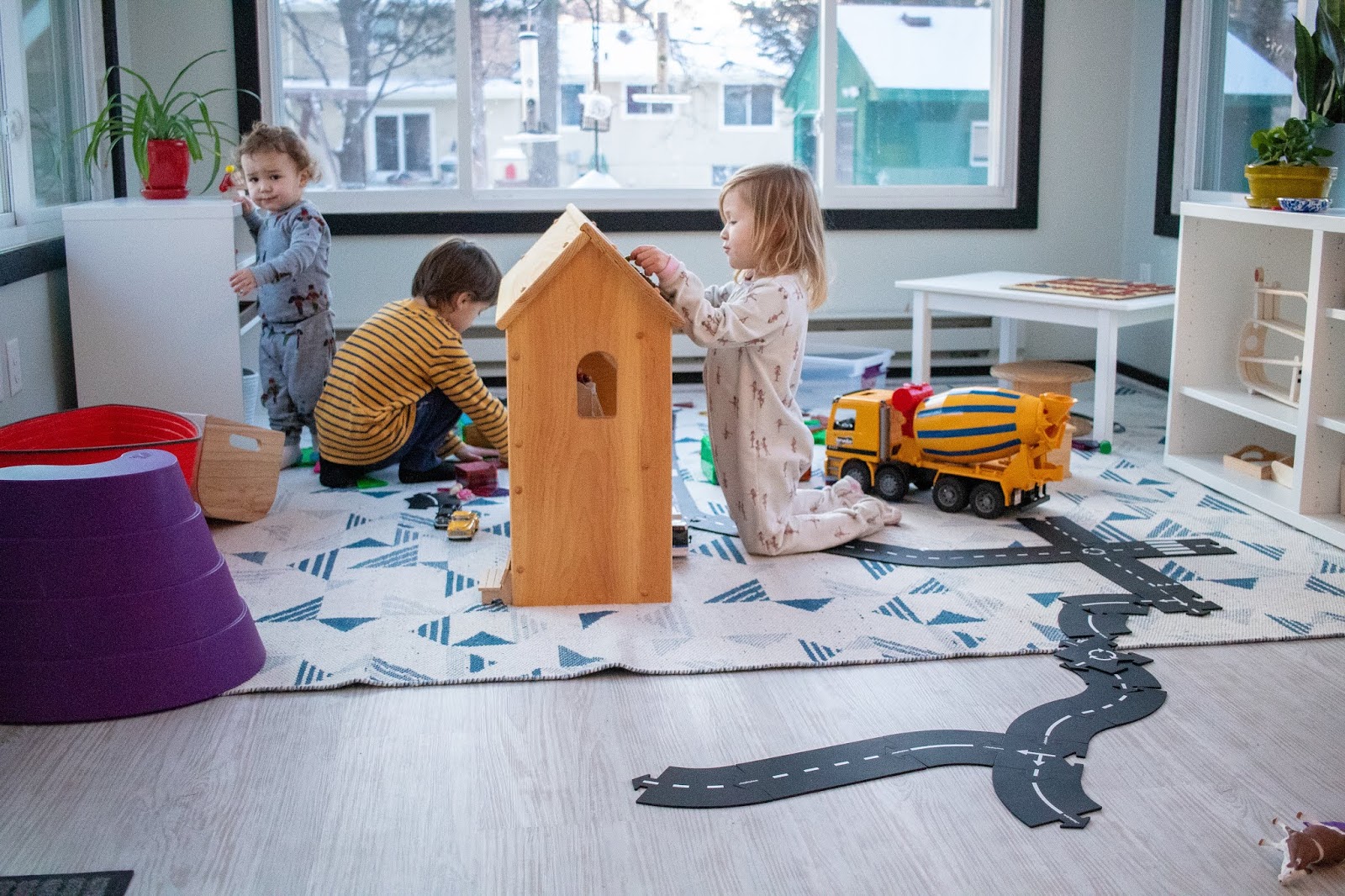Open-Ended Play: 4 Reasons Why Your Child Needs More of It

Published Date: 03/28/19
It happens to every parent – you buy a new toy that you’re sure will be a hit, but your child is more interested in the packaging. There’s a reason for this. Often the toy – a doll, a car, a stuffed animal – is exactly what you expect it to be. But the packaging – it can be anything. Anyone else remember cruising the neighborhood in the back of your mom’s station wagon looking for refrigerator boxes? Those boxes became forts, art projects, space shuttles, doll houses – the possibilities were endless.
When we give our children the opportunity for open-ended play, we foster creativity and imagination, but the benefits don’t end there.
What is Open-Ended Play?
Open-Ended play involves simple materials and toys that offer the freedom to create and discover. There are no rules in open-ended play. That means, there are no steps to follow, no strict boundaries, no correct method, and no particular goals. Simply put, open-ended play is all about going with the flow and giving children freedom to experiment & discover.
This kind of play allows children to express their creativity freely, since there is no fear of doing it wrong.
In this post, we’ve shared the top 4 reasons why your child needs plenty of open-ended play in early childhood.
Reason 1 – Open-Ended Play Allows Children to Explore New Ideas
Children are naturally curious and love to explore new ideas and concepts. They get lost in their imagination and pretend play. One minute they’re a knight holding a sword, and the next that sword becomes a magic wand and they’re casting spells around the house.
It’s amazing to watch children move effortlessly from one pretend character to the next, without giving a thought to reality. It’s important that adults allow this freedom and don’t burden children with their own limitations.
Reason 2 – Open-Ended Play Provides a “No-Stress” Environment
Fear of mistakes is one of the most common barriers in learning – in childhood and in adulthood.
For children, open-ended play is the best way to overcome this fear. The no-stress environment encourages freedom and exploration, without fear of being wrong.
This inspires children to take risks, which makes the open-ended play one of the best tools for building a positive attitude toward learning.
Simply put, open-ended play teaches children that it is okay to make mistakes, and that making mistakes is actually a part of learning.
Reason 3 – Open-Ended Play Helps to Develop Social Skills & Emotional Intelligence
Open-ended play involves communication with other children, at home & also at childcare centers, teaching them the social cues and how to respond appropriately. This kind of play also fosters social awareness, explores a range of emotions, and encourages teamwork!
For example, children learn to share ideas and toys. Cooperation is at the forefront of pretend-play, as children assign different roles then frequently rotate who gets to play what character. Negotiation is often taking place during and children are learning to be flexible.
Additionally, emotional intelligence is developed. For example, one child may forgo their turn when they see another child is sad that they have to wait.
Reason 4 – Open-Ended Play Helps to Develop Decision-Making & Leadership Skills
In open-ended play, the decision-making is left to the children. Instructions are not provided, and children are allowed to create from scratch.
For example, if you give a board game to a child, he or she will (well, might) follow the given rules and instructions. But if you give them a set of building blocks, he or she will build something entirely from imagination.
When children engage in pretend play together, one will often initially stand out as the leader, telling friends what roles to play and what to do. But, as play continues, often other children will step up and lead the group as they change direction.
Conclusion
Overall, open-ended play helps a child become fully engaged in learning – from exploration & active learning to creating & thinking critically. All of these foster your child’s development and teaches them how to become and remain a motivated learner.
- stacey's blog
- Log in or register to post comments